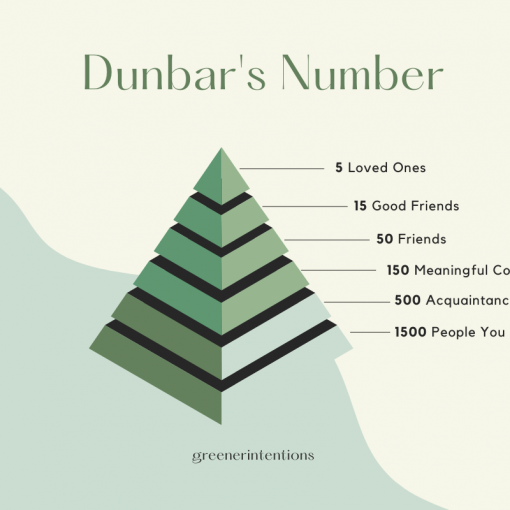
As someone who tries to live intentionally, I find myself gravitating to articles, videos, and conversations that pertain to minimalism and intentionality on a regular basis. It is not talked about on a daily basis, so in order to encourage the habit and the mindset, I like to be reminded. This blog could be one source that brings up intentional topics for you. Ideas to ponder or try out if you are looking for a change.
If you get one thing out of this post I hope it is that you don’t need to buy something to be important. Your purchases have nothing to do with who you are as a person. Most people really don’t care at all what you own. If you don’t believe me, think about your close friends and ask yourself if you would still be friends with them if they didnt buy the newest phone. Of course you would still be their friend, so don’t feel like you need it either!
Focusing on planned and perceived obsolescence in this post. In a nutshell, these terms are good to know about if you struggle with why it feels like on a daily basis you are surrounded by more and more stuff, with what seems to be, no end. I have found this helpful as I look to be more intentional with my purchases.
Planned Obsolescence
Planned obsolescence is companies intentionally making products that need to be replaced due to failed parts, weak products, or lack of replacement parts.
Examples:
- The clothes you buy that only last a couple times through the wash.
- The cell phone batteries that are the most common element to fail, but are glued into the device making it difficult to replace. This leads to replacing the entire phone just because of the battery.
The concept of planned obsolescence can be hard to pin down without actual proof from companies. While I do feel it is important to acknowledge that this type of mindset does exist in companies all over the world, I don’t think it is a great idea to focus on it. As someone who is already bummed out by the way companies and society are treating the planet, I can’t say focusing on planned obsolescence will help give me hope we can work our way out of this.
Perceived Obsolescence
Perceived obsolescence involves companies making you “feel” like you have inferior goods when newer models or styles come out. They may change small features of their initial design and push it to the market.
Example:
- Buying the newest Alexa device, but less than a few months later the next generation is out and it has more features. With clothes, the trends changing to make you feel inferior when the next style is out.
This is not something just prevalent in company marketing, but we can also push each other to buy something new. Encouraging each other to make purchases or going shopping together as a past time. Whether it is intentional or not, our responses affect other people and can cause them to feel they need something too. This particular topic is something I am working to get better at. I know I don’t want my friends and family to feel they need to purchase something in particular to win my approval, so I try to give off that vibe to them as well.
How are planned and perceived obsolescence wasteful?
Cost – We are spending money on failing items or items we feel we need to update.
Time – We work to earn money to spend on these items. We take time watching ads for these items. Time spent purchasing these items. Time spent caring for all these items. Only to use them for a short time and start the process all over again.
Resources – Everything item takes resources to make. A laptop has tons of small components that must be individually created, shipped multiple times in order to finally get to the manufacturer of the product who then puts it all together, and ships it to the store, who may even then ship it to the customer. Not to mention when you decide a just a few years later to move to the next model, you then need to discard that laptop.
Waste – These items that often have just enough not working on them to be useful are thrown into the trash or recycled. You buy a new phone, with a new power cable, new case, and screen protector. The phone breaks not long after the warranty expires, leaving you with a power cable, screen protector, and new case that doesn’t fit the new phone. All of it leading to waste.
How to adjust our thoughts around purchases.
Avoidance. I think this is one of those times “avoidance” is actually good advice. If you don’t need it or don’t think you will get good use out of the product, skip it. Save the money, time, resources, and waste.
Second Hand: I am a big fan of second hand. Check out this blog if you want more information. For now, I wanted to point out that electronics can also be purchased second hand. Some good resources include trademore or gazelle. I know when my phone does die, I will be looking to these two sites to make my next purchase.
If you want even more information on second hand tech, I encourage you to check out Shelbizleee’s blog article here. She even mentions Trademore and Gazelle. Shelbizleee is a fantastic human that went to school for environmental science and does work educating on lifestyle changes to live more sustainably. I recommend any of her Youtube videos or blog articles!
Quality over quantity: Look for products that sell based on their wear time. There is a website called Buy Me Once that only sells what they deem are the longest lasting of that particular product. I recommend checking it out.
Buying quality over quantity often brings up cost. It costs more for those quality items. For me, this is a benefit. I save up to make the purchase, this allows me time to consider if I really do need the product in the first place and makes has me appreciate it a lot more. In the end as I realize I don’t have to buy another one in just a few wears or a couple years.
Set Purchasing Rules: Doesn’t sound super fun, but I can assure you, I have been really happy with my rules I have set for myself.
Here some ideas, but feel free to tweak them to make them fit your lifestyle.
- Ask yourself “if this broke after I bought it, would I have it fixed?” If you wouldn’t fix it, it may not be worth purchasing.
- You could have a 1 week wait time on anything over $30 you want to purchase.
- Require yourself to watch 3 video reviews of any new electronic you wish to purchase.
- Check out the company’s website to see how transparent they are on the products they sell.
- Check out how easy it is to repair it BEFORE you buy it.
- Is taking care of this object going to stress me out more than just not owning it at all?
Conclusion
We went over perceived and planned obsolescence and what they are. I spelled obsolescence wrong so many times while writing this my computer is probably very concerned that I don’t learn from my mistakes. We touched on how to acknowledge perceived and planned obsolenscence and recognize it so it doesn’t affect our purchases. Lastly, we worked to address some ways we can adjust our purchasing habits to avoid it in the future. If you have tips or thoughts, please leave them down below, I would love to chat with you.

Resources
Giving Secondhand a Second Chance




